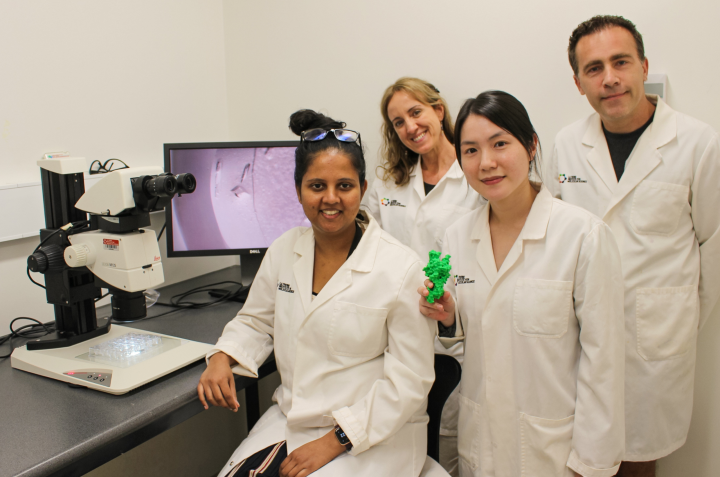A multinational research group has uncovered how the bacterial toxin Ssp may penetrate and kill a wide variety of living cells, including human cells.

Image Credit: La Trobe Institute for Molecular Science.
The discovery, reported in Nature Communications, could pave the way for the development of new antimicrobial treatments that avoid the usage of antibiotics.
According to the researchers, the structure of a new toxin class has not been discovered in nearly a decade.
Scientists from the La Trobe Institute for Molecular Science (LIMS) and the French National Research Institute for Agriculture, Food, and Environment were able to see the molecular structure of the Ssp toxin from the bacterial pathogen Serratia marcescens using the Australian Synchrotron.
One of the two lead researchers, Dr Jason Paxman of La Trobe University, stated that Ssp is a new form of toxin with a design unlike any of the others ever known to science.
Pretend you've never seen a syringe before, but someone explains what a syringe does—injects substances into human tissue, then all of a sudden you have a picture of a syringe, and you see the plunger and needle—that's what this what we've done here. So now that we actually have the structure of the toxin, we can see how it injects itself into cells to cause disease, and then start designing ways to stop it.”
Dr Jason Paxman, La Trobe University
The environmental pathogen S. marcescens is notable for infecting livestock, insects, and plants in addition to causing various human infections such as respiratory diseases and bloodstream and urinary tract infections. Other pathogens, on the other hand, have a narrower host range.
Serratia’s major toxin Ssp can penetrate and kill a diverse spectrum of living cells because of its broad host range. Ssp-induced cell death is to blame for the sickness linked with S. marcescens infections.
According to Professor Begoña Heras, Head of the LIMS Structural Biology and Bacterial Pathogenesis Laboratory, understanding what Ssp looks like enables us to develop targeted inhibitors.
These inhibitors or antimicrobials may be developed to bind to the part of Ssp responsible for injecting itself into cells. Serratia has quite high levels of antibiotic resistance and can cause infections in a wide array of hosts, from humans to insects.”
Begoña Heras, Professor and Head, Structural Biology and Bacterial Pathogenesis Laboratory, La Trobe University
Novel inhibitors of the Ssp toxin can be used to “disarm” S. marcescens and lessen the sickness during infections. This would evade the use of antibiotics.
Source:
Journal reference:
Hor, L., et al. (2023). Crystal structure of a subtilisin-like autotransporter passenger domain reveals insights into its cytotoxic function. Nature Communications. doi.org/10.1038/s41467-023-36719-2.